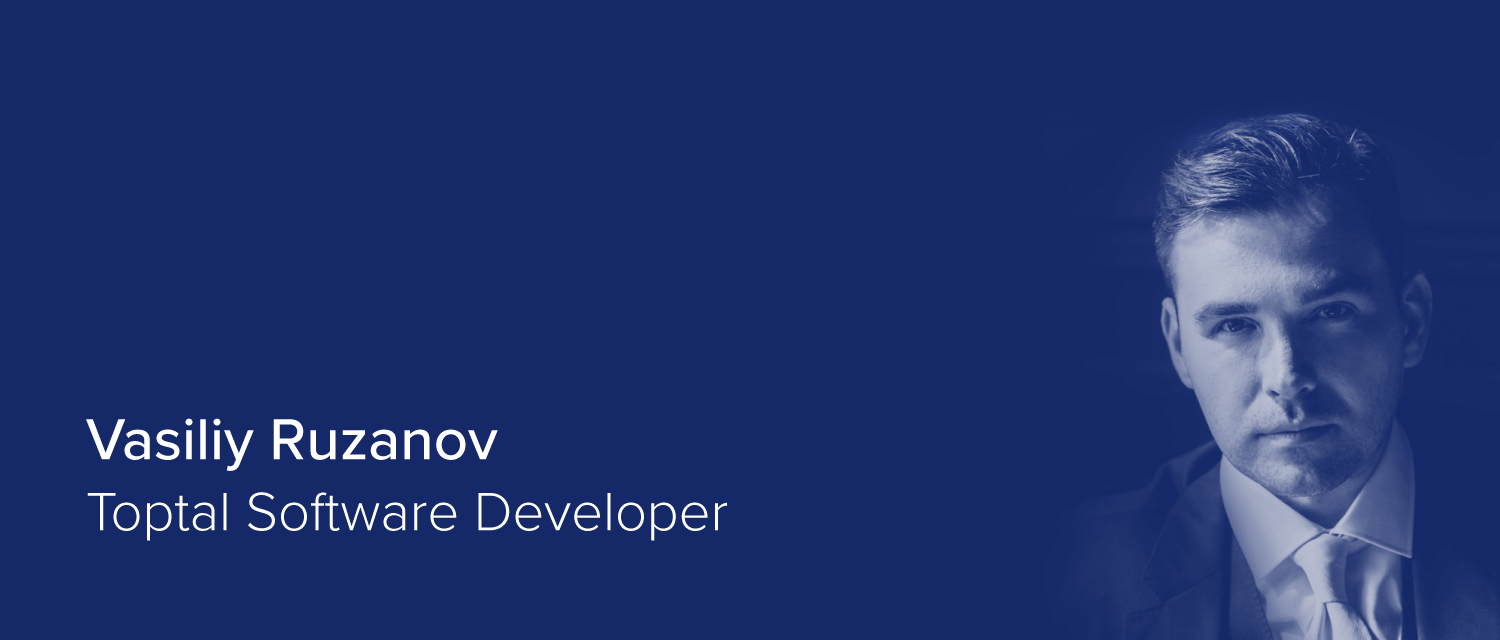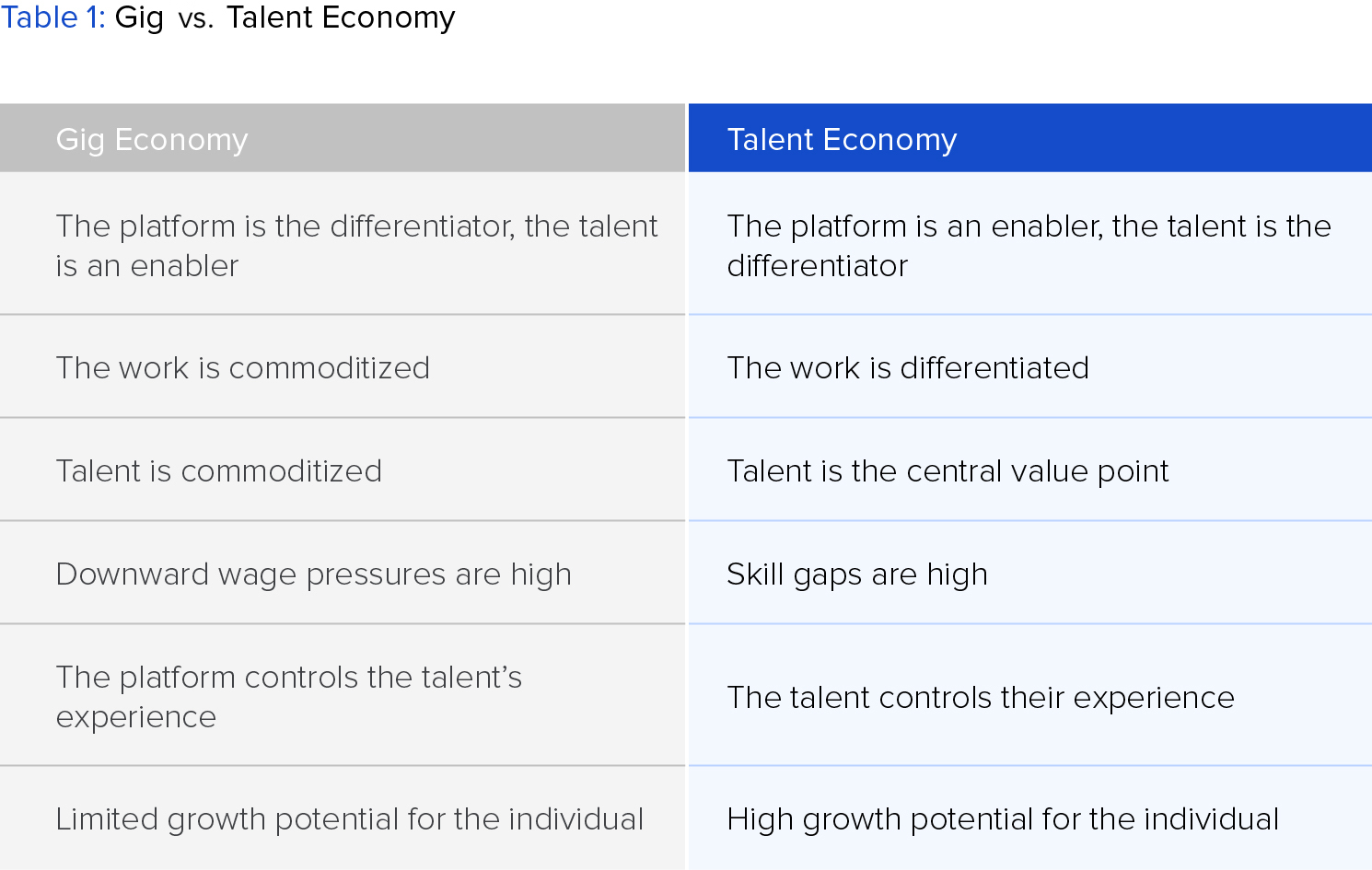The New Millionaires: Establishing a Lucrative Freelance Career
We consulted with some of the highest earners (mid-six-figures or more) in the Toptal network on the current landscape of freelancing, traits of high-performing freelancers, and how remote talent can create lucrative freelance careers on their terms.
We consulted with some of the highest earners (mid-six-figures or more) in the Toptal network on the current landscape of freelancing, traits of high-performing freelancers, and how remote talent can create lucrative freelance careers on their terms.

Toptal Research
We pair cutting-edge data with editorial insights to inform readers about the future of work.
When the words “remote freelancer” first shimmied their way into the work-culture lexicon, they represented a gamble—a side-hustle at best. “Work hard and climb the ladder” was dogma. Then remote work came in and upended that normalcy, creating a wealth of new opportunities, especially for freelancers. (See more about the history of remote work in this infographic.) In the newly-emerged talent economy, full-time freelancing is a legitimate career with as much earning potential as traditional careers and unprecedented levels of freedom, self-direction, and opportunity.
In this piece, we’ll examine top freelancing tips from high-earning freelancers within the Toptal network: individuals who have accumulated high six-figure or million-dollar earnings over five or six years. Their insights shed light on what it takes to dismiss outdated mindsets and create a freelance career that equals or even surpasses traditional ladder-climbing.

The Emerging Talent Economy
One of the most potent draws to full-time freelance work is the extraordinary level of autonomy it offers. “You can decline to extend contracts if you aren’t happy with the way work is going,” says Toptal iOS Developer Vadim Dagman. “You can work out of the quiet of your home, or you can live a nomadic lifestyle and travel while continuing to work.”
In Dagman’s experience, freelancing creates richer opportunities for professional networking. “I have the opportunity to work on projects at different stages of development, sometimes touching projects in their infancy and dictating development. You have many more opportunities to meet and forge relationships with people as a freelancer than you would in a company.”
Successful talent say that platforms and payment systems have been critical to the advent of remote freelancing. “It used to be a challenge for freelancers to promote themselves and create relationships with potential clients,” says Dagman, “but there are platforms now, like Toptal, that help establish those relationships for you.” Not every freelance opportunity has a happy ending and negative experiences discourage newcomers; talent platforms create a layer of protection for both freelancers and clients.
Side-hustles to Solid Opportunities
Toptal Software Developer Vasiliy Ruzanov started out the way a lot of freelancers do: freelancing on the side. That was in the late 2000s. Ruzanov attended the Togliatti Academy of Management in Russia while developing an important product for a major company. Soon remote work became more common, and tools like Skype enabled Ruzanov to freelance full-time.

By staying on top of emerging trends, Ruzanov has accumulated more than 18 years of experience with an array of companies: large businesses, educational institutions, marketing platforms and financial, insurance, and blockchain startups, to name a few. Ruzanov often works on multiple projects at a time—that’s in addition to running his own independent consultancy. Since joining the Toptal network in 2014, Ruzanov’s earnings have rocketed into the high six-figure range.
Ruzanov’s multi-project involvement is a common thread for freelancers. A 2018 survey of Toptal’s global talent community revealed that 27% of freelancers devote at least 10 hours a week to their own startup or side-business. According to a 2018 survey by financial services company Payoneer, four out of five freelancers juggle as many as three projects at once. Some take on more, taking advantage of flexible working hours to develop multiple revenue channels.

Toptal iOS Developer Vadim Dagman also began his career in Russia, but unlike Ruzanov he shifted his roots to the Silicon Valley startup scene. Dagman’s career is illustrative of the breadth of opportunities freelancers can seize. He’s developed a panoply of apps, from calorie trackers to voter registration systems and games. He’s also co-founded two companies, has seven patents to his name, and is currently the founder and CEO for Digital Prunes, Inc—all of this as a full-time freelancer. His company has released nine iOS games to date including Slingshot Cowboy, a number one free game on the app store with tens of millions of downloads. Through his freelance work with Toptal alone, Vadim has earned over a million dollars.
Freelancing is no longer a holdover between “serious jobs” and it’s no longer shaky ground. More freelancers are realizing the expansive opportunities it offers: the freedom to create self-defined career paths that are equal parts profitable and fulfilling.
Earning Potential
Worldwide, the rise of freelancing has surpassed the growth of traditional employment. It’s three times as fast in the US. And yet—according to the Payoneer survey referenced above—income satisfaction sits at an average of 5.03 on a scale of 1-10. Freelancers in every field report a common irk: getting stiffed. The average worldwide hourly rate for freelancers is a whopping $19.
A critical delineation needs to be made here: the difference between the gig economy and the talent economy, which we’ve published on previously. “Freelance” is an umbrella term and these career paths have wildly diverse earning potentials—a Lyft driver has a narrow salary range compared to a JavaScript developer. In this article, we’re focusing on careers within the talent economy, where talent is the central value point, skill gaps are high, the work is differentiated, and the talent (rather than the platform they’re hired through) controls their work experience. To contrast the hourly rate cited above, freelancers in the talent economy tend to earn multiple times more per hour.

For freelancers, income scalability is boosted by the unique flexibility freelancing offers. In a traditional career trajectory, increased income is achieved via ladder-like advancement or side-hustles, often resulting in strenuous, 80+ hour weeks. For high-performing freelancers like Dagman, a lucrative stream of projects can be efficiently juggled without sending working hours into the red zone. He says that the earning potential for freelance talent is actually higher. Data reaffirms this: according to a survey of Toptal’s global network, the greatest perceived benefits of remote freelance work are flexible hours and increased job opportunities. “If you are good at multitasking and can handle several projects at the same time, you can earn a higher salary as a freelancer,” Dagman states. “That’s not what compels me to do it, but it’s a definite upside.”
Challenging Outdated Mindsets
It’s easy for newcomers to feel overwhelmed. “It’s a common issue I encounter with new talent,” says Ruzanov. “They’re afraid to realize that it’s not an inferior job or style of working, it’s just different. It’s a little mindset shift they have to pass before they go in completely. Talent that work via Toptal for a few years—they totally change their minds. My advice is to try to ignore all the stereotypes. An overall global mindset shift in going on.”
The 9 - 5 career path is still engrained in generational and cultural preconditioning. “It sinks too deep into the mind over time,” says Ruzanov. “Most local developers here, in St. Petersburg where I live, work in the office. There’s a global fear of ‘what if.’ As a freelancer, things are a little bit different. There are no compensation packages. Some people are just afraid to try.”
Ruzanov recommends challenging the notion that traditional office employment is a safety net. “It’s simply not true,” he says. “Once you’ve succeeded with that, it opens up a lot of good thinking—thinking in terms of your own possibilities. Trying to keep safe, you’re inherently keeping yourself in the invisible confines of your own situation.”
Freelance opportunities are abundant and research suggests that the majority of the US workforce will be freelance by 2027. Not only is freelancing generally more commonplace, the number of high-earning freelancers has risen as well. According to MBO Partners, one in five independent freelancers earns over $100,000 annually, and that demographic has increased more than 70% since 2011. With full-time freelancing normalized, the talent economy will only continue to expand, creating a synergistic cycle of high demand and increasingly profitable opportunities.
Getting Started
Initiating a successful freelance career can be the most difficult step but the top earners we spoke to recommend optimism to the nascent freelancer. A job description or list of requisite technologies might not align fully with a client’s true intentions, they say, and it’s not advisable to assume a job posting was written by an expert. Sometimes talent discover that they’re better matched for a position than expected.
According to Toptal Software Developer Roman Useinov, diving head-first into new opportunities is a profound learning opportunity. His clients have included US TV-streaming platform FuboTV and Booking.com, one of the biggest eCommerce websites in the world. Since joining Toptal in 2014, Useinov’s earnings have stretched into the mid-six-figures. “Don’t hesitate to attack things that you are not very familiar with,” he says, “you are basically being paid for learning new, exciting stuff. That keeps you interested and motivated too—you’ll do a better job as a result.”
Most freelance veterans don’t suggest freelancing full-time out of the starting gate. “Begin doing projects on weekends or after work, still working a regular job, to see if you want to pursue it further,” says Dagman. “My second piece of advice is to try becoming part of a network like Toptal. You can usually earn more money because of greater access to clients. As a completely independent freelancer, you often have to look for clients yourself and sometimes pursue cold leads. Being a part of a professional network makes it much easier to secure work.”
Freelance opportunities can come from anywhere in the world to talent anywhere in the world. It’s critical to be fluent in the global language of today: English. “Speak it as soon as possible,” says Ruzanov. “There are a lot of great talent over here [in Russia] who are just not good at English at all.”
The Four Disciplines of a Top Freelancer
Passionate Flexibility
“You need to love what you do,” says Dagman. “Passion for work shows through in everything. I’m passionate about development, and I think that’s been a big contributor to my success.” If anything, passion is even more crucial in a remote environment. “Some companies are hesitant to use freelancers because they know you can jump ship at any time,” says Dagman. “You have to counteract this fear by respectfully sharing your thoughts and opinions and being attentive and engaged in discussion. Show them that you care about their product as much as they do.”

Along with passion, flexibility is key. Top talent often find themselves hopping between multiple projects in a single day. Refocusing can be tricky. “It’s important to be able to give your full attention to each project and switch between projects effectively so that all clients feel you are totally invested in their project,” Dagman stresses.
Assertive Communication
Dagman also urges incoming freelance talent to prioritize communication and timeliness. (Learn how to effectively manage cross-cultural communication here.) “It’s especially important that you understand how to communicate effectively in written form. It’s easy for the intended tone of a message to be misconstrued.”
“It’s no longer enough to be a professional in your field,” says Useinov. “You have to be a good communicator and feel the vibe of the people you are working with.”

Nearly all of the top-earners we interviewed urged new freelancers to trade hesitancy or timidity for assertiveness. Self-confidence is critical. Because freelancers move between opportunities quickly, they say, it’s critical to feel prepared when walking into the unknown.
An unwritten part of a freelancer’s job—especially when working with a new client—is to align project descriptions with deliverables. What a client asks for can be a few degrees from what they actually want, and it’s up to the talent to find the bullseye. Request-to-output translation is a skill top freelancers master, and it correlates to higher earnings and future opportunities.
Self-Evaluation and Continuous Learning
In between projects, top freelancers take the time to think critically about their last project and self-evaluate: _Did I meet expectations? Did I exceed them? Did I communicate well? _As a freelancer, there are no formal performance reviews. The only way to ensure continued growth—and higher income in tandem—is to identify areas of improvement and create strategies for progress.

A survey of the global Toptal network reveals dedication to ongoing education and career development: 79.5% took an online course within the past year to develop technical skills. “It helps to be proactive,” says Useinov. “It also helps a lot to focus on a wide variety of technologies and roles in order to fill the gap when needed.” Top freelancers harp on the importance of staying hip to trends and incoming technologies. Freelancing is increasingly competitive; staying at the cutting edge ensures viability and commensurate payments by proxy.
Mastery of Productivity
The freelance lifestyle comes with a unique set of challenges, like the allure of distractions that abound in a home office environment. “Distraction is the biggest productivity killer for me,” says Ruzanov. Freelance talent must tackle problem areas like these head-on—avoiding pitfalls like burnout becomes part of the job description.
Freelancers must become adept at planning and scheduling their day to complement their unique working style. This places the onus of productivity where some would argue it belongs—on the talent. Managers enjoy a related benefit: excising the arcane “manager-as-overseer” model and refocusing that energy elsewhere.

Under the right circumstances, and given appropriate attention, productivity and creativity thrive when freelancing. Where traditional employment treats work as a time-input, remote freelancing embraces the fluid nature of productivity and creativity. High-performers realize where the greatest opportunities for productivity exist within their day and schedule work into those openings. “I’m way more productive when working at home or somewhere else other than the office,” says Ruzanov. “There are times when I just scratch everything off and do a solid chunk of work—which I would have otherwise done in two days—in two hours.”
Mastering productivity has a linked benefit: earning potential. Because high earners can juggle intensive projects efficiently without inviting overwhelm, they’re typically able to handle more. The resultant payout can be very satisfying.

Scanning the Horizon
With the internet at its fingertips, the remote freelance workforce continues to enjoy an influx of opportunity. “I’m seeing more startups use freelancers for their first prototype or minimum viable product,” says Dagman. “Freelancers were not usually brought in at that stage of development, but companies are now using them to establish a product before building out a core team.”
“Companies are increasingly comfortable with the idea of remote/distributed workers and freelancers,” he adds. “I think we’re also starting to see some expansion in the types of jobs that are done remotely. I think it’s going to continue to open up and include new positions.”
Cultural shifts also point to a golden era for freelance careers. Millennials in particular place a greater emphasis on work/life balance and flexibility over promotions and traditional ladder-climbing. That’s exactly what these opportunities offer: careers on self-defined terms with equal (sometimes greater) monetary payoff.
